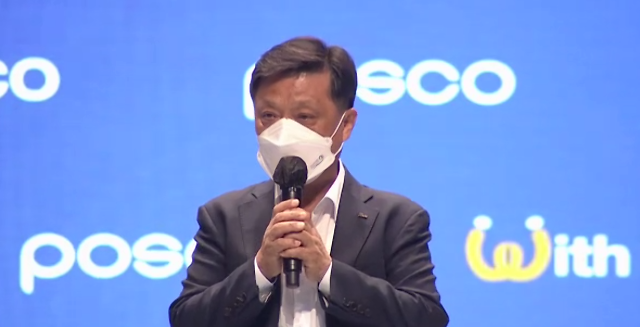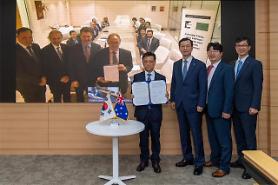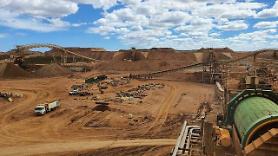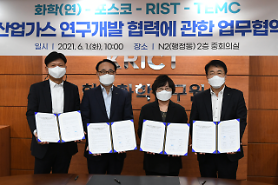
[Courtesy of POSCO]
SEOUL -- South Korea's steel group POSCO aims to put an eco-friendly steel production system using hydrogen as a reducing agent into actual operation in 2027 as part of efforts to decarbonize and reach net-zero carbon emissions by 2050. Normally, furnaces use coal as a reducing agent to separate oxygen from iron ore.
"We are considering a million-ton demo plant from 2023 as a national task and aim to actually operate it in 2027," POSCO's steel sector head Kim Hak-dong said in an online news conference on September 29. He said his company needs up to 40 trillion won ($33.8 billion) to achieve carbon neutrality by 2050.
POSCO nurtures green hydrogen as one of its new growth engines. The group aims to produce up to 500,000 tons of blue hydrogen by 2030 and complete a five-million-ton green hydrogen production system by 2050. "It takes a considerable amount of time technically for carbon neutrality," Kim said, calling for government support.
In August, POSCO tied up with its Australian raw material supplier, Roy Hill Holdings, to establish a cooperative system for the reduction of carbon emissions. They agreed on joint research to develop an optimal hot briquetted iron (HBI) production system. HBI produces steel products after making reduced iron without carbon dioxide emissions by using hydrogen as a deoxidating agent.
POSCO and Roy Hill would work on the development of technology to capture, utilize and store carbon that occurs during blue hydrogen production. Blue hydrogen is derived from natural gas with carbon capture technology while green hydrogen is produced from water using renewable power.
"Steelmaking using hydrogen as a reducing agent is a revolutionary technology that writes a new history, but the development process is expensive and takes a long time," POSCO's technical research center head Lee Duk-lak said, suggesting the steel company is willing to open some of its FINEX method as a platform technology.
In the FINEX process, molten iron is produced directly using iron ore fines and non-coking coal rather than traditional blast furnace methods through sintering and reduction with coke. The elimination of preliminary processing makes FINEX less expensive to build than a blast furnace facility of the same scale. The process is claimed to produce less pollutants.
POSCO has decided to adopt the so-called HyREX method using hydrogen, Lee said, adding that it is more cost-efficient than the method adopted by European steelmakers that put iron ore processed in the form of beads and add heated hydrogen from the bottom. As hydrogen and oxygen in iron ore react, the reduced iron descends and water vapor flies upward.
POSCO's method puts fractional iron fine and heated hydrogen down. "POSCO's technology applied with FINEX has great economic advantages as it can use iron ore fine without pretreatment," Lee said.
Copyright ⓒ Aju Press All rights reserved.



